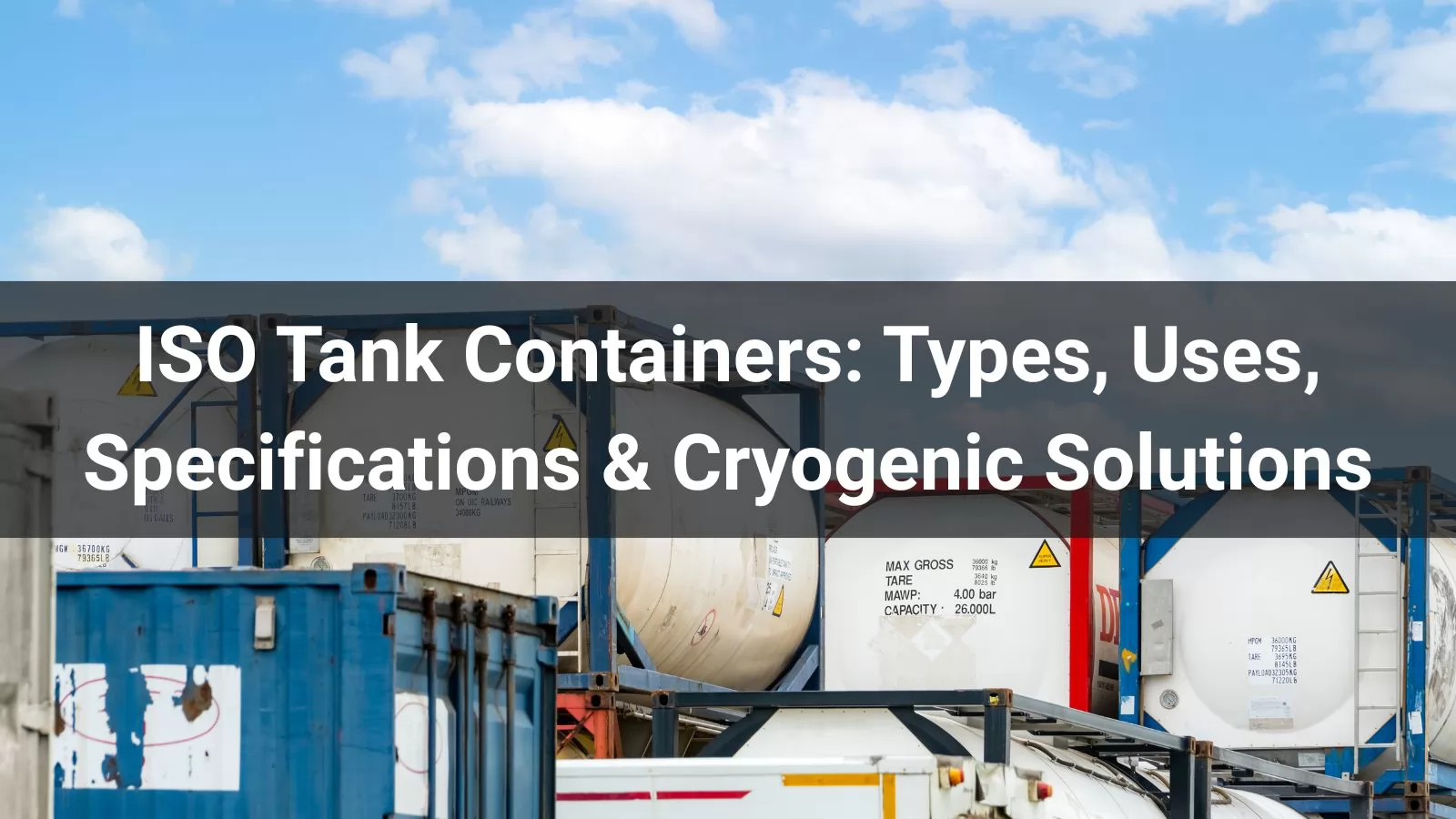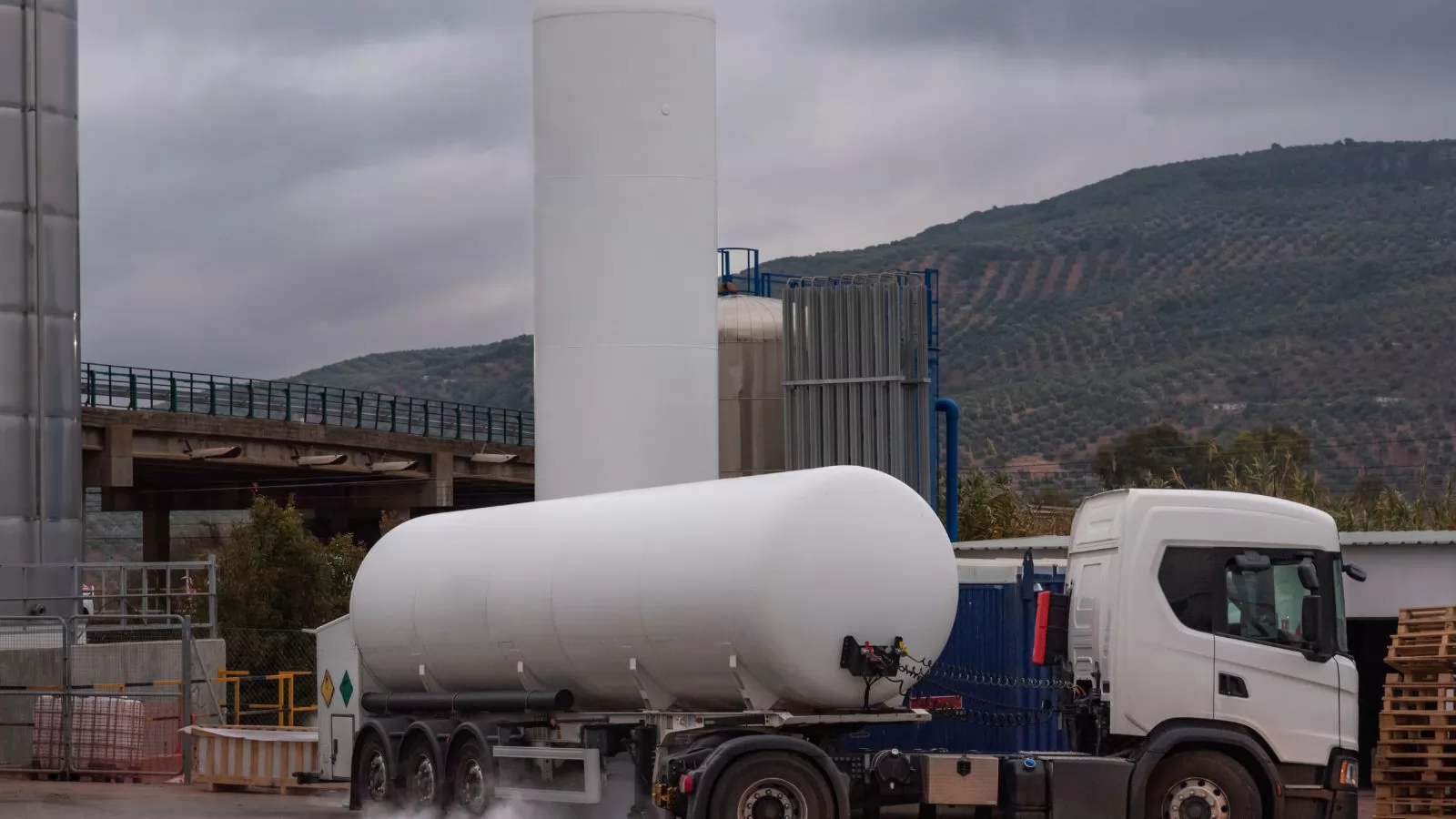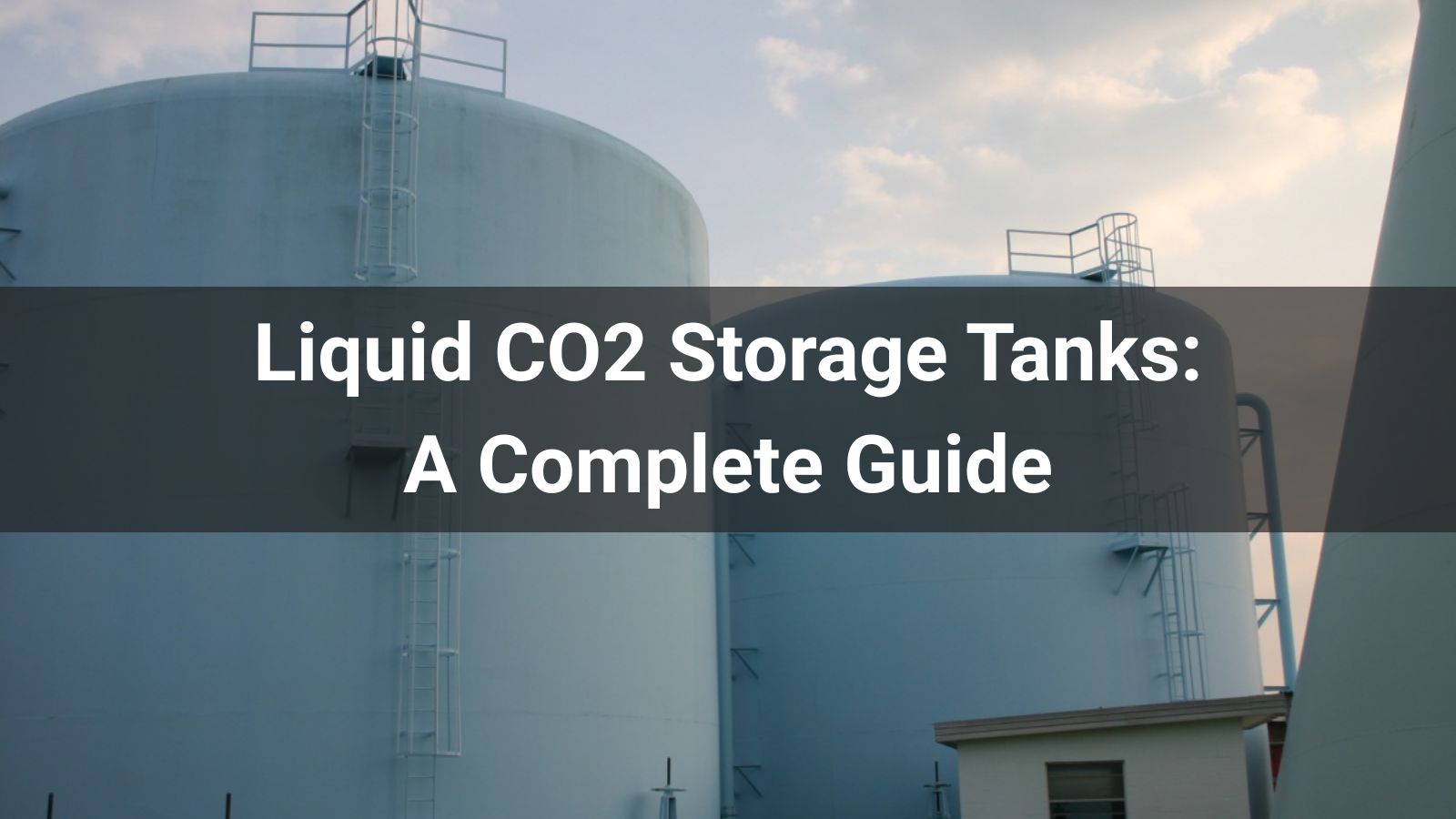






In the modern global logistics landscape, ISO tank containers have become indispensable for the safe and efficient movement of bulk liquids, gases, and temperature-sensitive materials. These standardized containers enable seamless transport across road, rail, and sea, dramatically reducing handling risks and improving cost efficiency compared with traditional packaging like drums or IBC totes.
Whether you are transporting LNG, industrial gases, or chemical products, the right ISO tank design ensures reliability, compliance, and long-term performance under demanding conditions. That’s why choosing a certified supplier matters — and why Cryo-Tech has earned its reputation as a trusted partner for cryogenic ISO tank solutions worldwide.
Looking for high-quality ISO tanks or other specialized container types? It’s fast and straightforward to find the exact model you need through our platform. Simply specify the tank type or capacity you require — for example, LNG, LOX, or LIN transport tanks — along with your preferred region, and you’ll get matched with ready-to-ship solutions right away.
Quick takeaway: ISO tanks are the backbone of global bulk logistics. Understanding the difference between standard (T11/T14) and cryogenic (T75) tanks — along with international certifications such as ISO 1496/3, IMDG, and ASME — helps buyers and engineers make better procurement decisions and ensure safe operation from day one.
An ISO tank container is a stainless-steel, cylindrical pressure vessel mounted inside a rectangular ISO-compliant steel frame. Built to standardized dimensions, an ISO tank is specifically engineered for intermodal transport: it can be lifted and stacked using common port and rail equipment without repacking the cargo.
Compared to drums and IBCs, ISO tanks offer:
Use cases range from bulk chemicals and edible oils to cryogenic gases such as LNG and liquid nitrogen — the tank type and internal systems determine suitability.
A standard ISO tank consists of three primary elements:
Cryogenic ISO tanks incorporate additional systems to preserve ultra-low temperature cargo:
Engineering note: stainless-steel grade, weld methods, and NDT regimes are critical for tanks that carry corrosive chemicals or cryogens — Cryo-Tech follows ASME and international welding codes throughout fabrication.
An ISO tank container is a standardized pressure vessel designed for the safe transportation and storage of bulk liquids, gases, and powders. Each tank is manufactured in accordance with the International Organization for Standardization (ISO) dimensions, ensuring full intermodal compatibility across road, rail, and sea without requiring cargo transfer or repackaging.
Structurally, an ISO tank consists of a cylindrical stainless-steel inner vessel mounted within a robust carbon-steel frame—typically 20 feet in length. This frame is built to withstand stacking loads, mechanical shocks, and environmental stress, allowing the tank to maintain stability during long-distance and multimodal operations.
The standardization of ISO tanks ensures global interoperability. Whether you’re shipping non-hazardous chemicals, cryogenic gases, or food-grade liquids, an ISO-compliant tank can be safely handled using conventional container equipment, streamlining logistics across ports and depots worldwide.
Compared to drums or IBC totes, ISO tanks significantly reduce handling risks and cost per ton by maximizing payload efficiency and minimizing spillage or contamination. This makes them an indispensable asset in international trade, especially for companies managing cross-border liquid logistics.
Key Insight: ISO tank containers are more than just storage units—they are engineered systems designed for safety, efficiency, and sustainability across the global supply chain.
The strength and safety of an ISO tank container begin with its engineering. Each tank is a cylindrical stainless-steel vessel (usually grade 316L or 304) built to resist corrosion from a wide range of chemicals and environmental exposure. The vessel is encased in a carbon-steel protective frame that provides mechanical stability and ensures the container meets ISO 1496/3 and CSC requirements for intermodal transport.
Inside the vessel, specialized linings and coatings may be applied depending on the cargo. For example, food-grade tanks are polished to a sanitary finish, while chemical-grade tanks may use rubber or epoxy linings to prevent contamination. For cargo that is sensitive to temperature variations—such as LNG, LOX, or LIN—Cryo-Tech integrates multi-layer vacuum insulation systems to maintain ultra-low temperatures over extended durations.
A typical ISO tank structure includes:
Cryo-Tech’s cryogenic tank containers are specifically engineered to preserve the integrity of gases and liquids at temperatures below -196°C. These tanks employ vacuum-jacketed insulation and advanced thermal control systems, allowing precise pressure balance during both loading and long-distance transport.
Engineering Insight: The combination of stainless steel construction, reinforced framing, and vacuum insulation allows ISO tanks to maintain product purity, stability, and pressure control — even under the most extreme temperature and pressure conditions.

The global logistics industry has rapidly shifted toward ISO tank containers as a more efficient, sustainable, and cost-effective alternative to drums and intermediate bulk containers (IBCs). These tanks combine safety, durability, and environmental responsibility in one standardized system — making them an indispensable asset for international bulk transport.
When compared with traditional bulk transport solutions, ISO tanks not only enhance safety and efficiency but also align with the logistics industry’s shift toward greener and smarter supply chain practices. For cryogenic and chemical transport applications, these benefits are magnified — as product integrity and temperature stability become mission-critical.
Key Takeaway: ISO tank containers are a future-proof investment — combining cost efficiency, environmental compliance, and technical performance that meet the rigorous demands of modern logistics.
Industrial containers and tanks vary in structure, material, and application. The table below summarizes the most common types, their key features, and typical industrial uses.
| Type | Key Features | Typical Applications |
|---|---|---|
| Storage Tanks | Designed to hold liquids, gases, or chemicals in large quantities. Made from stainless steel, carbon steel, or aluminum for corrosion resistance. | Oil & gas, food processing, water treatment, chemical storage. |
| ISO Containers | Standardized containers with a stainless-steel inner shell and carbon-steel frame. Certified for international transport (ISO, CSC, IMDG). | Global logistics, chemical and liquid transport, bulk materials shipping. |
| Cryogenic Tanks | Vacuum-insulated double-wall tanks designed for extremely low-temperature liquids such as LNG, LPG, and oxygen. | Energy storage, medical gases, cryogenic transportation, industrial gas supply. |
| Chemical Containers | Corrosion-resistant and leak-proof, often equipped with safety valves and pressure monitoring systems for hazardous materials. | Chemical production, pharmaceuticals, and laboratory storage. |
| Portable Containers | Compact and lightweight for flexible transport or on-site use. Often made of high-strength plastic or steel. | Construction sites, mobile operations, laboratories, and small-scale logistics. |
By comparing these container types, buyers can quickly determine which model best suits their operational and safety requirements.
Selecting the right container or tank depends on several critical factors related to your operation’s safety, efficiency, and regulatory compliance. Below are the key considerations to guide your decision-making process.
Choose the appropriate capacity based on your transport or storage volume. Larger ISO tanks are ideal for bulk logistics, while portable or smaller stationary tanks are better for frequent handling or on-site usage. Verify the container’s pressure rating to ensure compatibility with your product’s storage conditions.
The tank’s construction material directly impacts safety and lifespan. Common materials include:
For cryogenic or temperature-sensitive substances, insulation plays a vital role. Tanks may use vacuum-jacketed, foam, or multilayer insulation systems to minimize heat transfer and product loss during storage or transport.
Always ensure the container meets international and local standards, such as:
Work with manufacturers that offer ongoing technical support, spare parts, and inspection services. Regular maintenance ensures operational safety and prolongs the tank’s service life, especially for cryogenic applications where insulation and sealing performance are critical.
By evaluating these factors carefully, companies can ensure both compliance and cost efficiency while minimizing operational risks.
Cryogenic ISO tanks are highly specialized containers engineered to safely handle and transport liquefied gases such as LNG, liquid oxygen (LOX), nitrogen (LIN), argon (LAR), and carbon dioxide (LCO2). These gases must be maintained at extremely low temperatures, requiring advanced insulation and precision pressure control systems.
| Industry | Typical Applications |
|---|---|
| Energy | Transportation and storage of LNG and LPG as alternative fuels; supporting clean energy transitions and decentralized power systems. |
| Healthcare | Storage and supply of medical-grade oxygen and nitrogen for hospitals, cryotherapy facilities, and biotechnology laboratories. |
| Metallurgy | Use of liquid argon and nitrogen in metal cutting, cooling, and inert gas shielding applications. |
| Chemical Industry | Bulk transport of industrial gases and chemicals requiring strict temperature and pressure control. |
| Food and Beverage | Preservation and freezing applications using liquid nitrogen for food processing and cold chain logistics. |
These cryogenic ISO tank systems have become indispensable for global supply chains, supporting industries where temperature precision, efficiency, and reliability are paramount.
Safety and compliance are the foundation of reliable cryogenic and industrial transport. Every ISO tank container must meet stringent international standards to ensure structural integrity, safe operation, and compatibility across different transport modes.
For global market access, cryogenic ISO tanks must often hold additional approvals recognized by national authorities and industry organizations:
Modern ISO tanks are equipped with an array of safety mechanisms designed to mitigate risks and enhance operational control:
All Cryo-Tech cryogenic ISO tanks are manufactured in accordance with these global standards and undergo rigorous testing before delivery. Each unit is pressure-tested, vacuum-tested, and performance-inspected to ensure maximum reliability. Cryo-Tech’s facilities are certified by ISO, BV, CE, and GOST, guaranteeing compliance across multiple jurisdictions and transport systems.
By maintaining full alignment with international safety frameworks, Cryo-Tech provides clients with containers that meet or exceed every operational requirement—from LNG transport to medical oxygen delivery.
When it comes to cryogenic and industrial transport, reliability, safety, and technical precision define success. Cryo-Tech stands at the forefront of ISO tank container manufacturing, providing clients with solutions that are not only efficient and durable, but also fully compliant with the world’s most demanding standards.
Cryo-Tech designs and manufactures fully customizable ISO tank containers to meet diverse operational requirements—from LNG and liquid nitrogen to industrial chemicals and food-grade liquids. Our engineering team works directly with clients to tailor tank capacity, pressure ratings, and insulation systems according to project specifications.
Each Cryo-Tech tank is produced using high-grade stainless steel and advanced vacuum insulation technology to minimize boil-off and ensure long-term performance. Our in-house R&D and fabrication teams adopt precision welding, multi-layer testing, and smart monitoring integration to achieve exceptional quality consistency.
All Cryo-Tech ISO tanks are built in accordance with ISO, IMDG, ASME, TPED, and ADR/RID standards, and come with regional certifications such as GOST, CE, and BV. This makes our products suitable for deployment across Asia, Europe, the Middle East, Africa, and the Americas, supporting international logistics operations with ease.
Beyond manufacturing, Cryo-Tech provides a complete lifecycle service—covering engineering consultation, logistics coordination, on-site installation, and after-sales maintenance. Our global service network ensures every tank is supported wherever it operates, maximizing uptime and operational safety.
With decades of experience in cryogenic engineering and a reputation for excellence, Cryo-Tech is your trusted partner for high-performance ISO tank solutions. Whether you’re expanding your LNG transport fleet or upgrading your industrial gas logistics, our tanks are engineered to deliver uncompromising safety, reliability, and efficiency.
Contact Cryo-Tech today to request a customized ISO tank solution or learn more about our cryogenic equipment portfolio.

![Top 10 Cryogenic Companies in USA[2025 Updated]](/statics/images/right.png)
![Top 10 Cryogenic Companies in USA[2025 Updated]](/uploads/202508/bannerlist_1756363009_WNo_800d450.jpg)


![Top 10 LNG Tank Manufacturers Worldwide[2025 Updated]](/statics/images/right.png)
![Top 10 LNG Tank Manufacturers Worldwide[2025 Updated]](/uploads/202506/CryoTech-banner-1-_1750490922_WNo_800d450.jpg)

